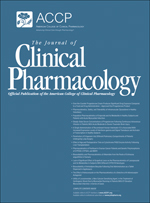 “Chronic pain may be treated by medical cannabis. Yet, there is scarce evidence to support the role of medical cannabis in the treatment of fibromyalgia. The aim of the study was to investigate the characteristics, safety, and effectiveness of medical cannabis therapy for fibromyalgia.
“Chronic pain may be treated by medical cannabis. Yet, there is scarce evidence to support the role of medical cannabis in the treatment of fibromyalgia. The aim of the study was to investigate the characteristics, safety, and effectiveness of medical cannabis therapy for fibromyalgia.
Results: Among the 367 fibromyalgia patients, the mean age was 52.9 ± 15.1, of whom 301 (82.0%) were women. Twenty eight patients (7.6%) stopped the treatment prior to the six months follow-up. The six months response rate was 70.8%. Pain intensity (scale 0–10) reduced from a median of 9.0 at baseline to 5.0 (p < 0.001), and 194 patients (81.1%) achieved treatment response. In a multivariate analysis, age above 60 years (odds ratio [OR] 0.34, 95% C.I 0.16–0.72), concerns about cannabis treatment (OR 0.36, 95% C.I 0.16–0.80), spasticity (OR 2.26, 95% C.I 1.08–4.72), and previous use of cannabis (OR 2.46 95% C.I 1.06–5.74) were associated with treatment outcome. The most common adverse effects were mild and included dizziness (7.9%), dry mouth (6.7%), and gastrointestinal symptoms (5.4%).
Conclusion: Medical cannabis appears to be a safe and effective alternative for the treatment of fibromyalgia symptoms. Standardization of treatment compounds and regimens are required.”
https://www.mdpi.com/2077-0383/8/6/807
“Medical cannabis appears to be a safe and effective alternative for the treatment of fibromyalgia symptoms.” https://www.ncbi.nlm.nih.gov/pubmed/31195754









